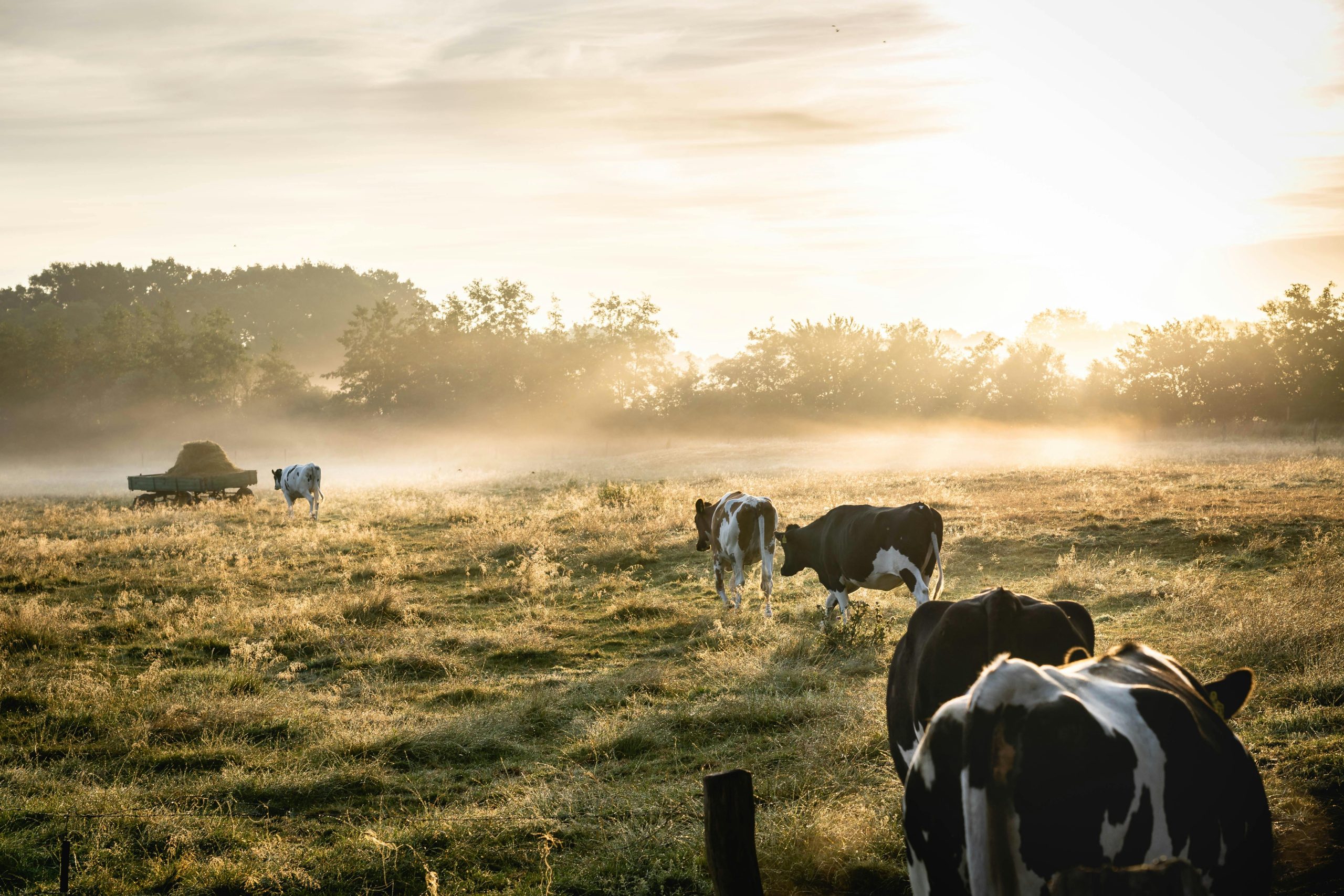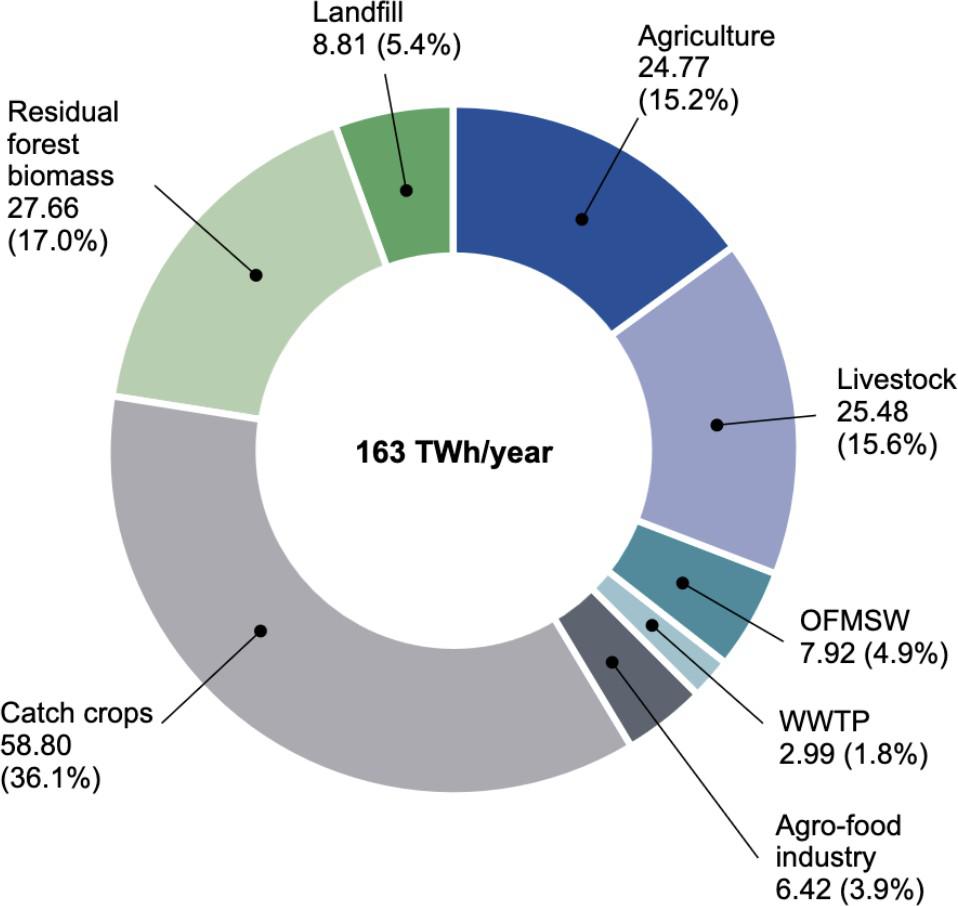Biogas from livestock manure, unlocking Spain’s potential
Authors: Ben Wunderlich, Esther Acha, Erlantz Lizundia, Estibaliz Sáez de Cámara & Ion Agirre; Bilbao School of Engineering, Repsol Foundation Classroom on Energy Transition & Circular Economy
Spain, like many other countries with a large share of agriculture in the economy, faces significant challenges in managing the vast quantities of livestock manure produced every year. In 2020, Spain had more than 6.7 million cattle, each producing approximately 17 cubic meters of manure annually 1.

Manure, particularly from large-scale livestock operations, creates environmental hazards when not treated properly. Nutrient overload occurs when excess nutrients like nitrogen and phosphorus leach into the soil and water streams, producing eutrophication. Another significant impact is derived from emissions of greenhouse gases. The uncontrolled decomposition of manure releases methane (CH4), a greenhouse gas with a global warming potential 27 times greater than carbon dioxide (CO2) over a 100-year period 2. Additionally, the process of manure decomposition releases NH3 and H2S, harmful gases that contribute to air pollution and generate unpleasant odors.
Given the massive quantities of manure produced annually in Spain, it is essential to adopt environmentally sustainable methods for treating this kind of wastes. One such method is anaerobic digestion. This biological process breaks down organic materials like manure in an oxygen-free environment, producing biogas (primarily composed of CH4 and CO2) and a digestate (a nutrient-rich byproduct). The process of anaerobic digestion involves four key stages: hydrolysis, acidogenesis, acetogenesis, and methanogenesis, during which complex organic materials are progressively cracked and converted into biogas. Each stage influences the others, with the overall efficiency depending on factors like pH, temperature, and nutrient balance to ensure stable and efficient biogas production.
The Potential of Biogas in Spain
Spain, alongside the rest of Europe, is at a pivotal moment in its energy policy, aiming to become carbon-neutral by 2050 in line with the European Green Deal and the Paris Agreement. To meet these ambitious goals, Spain is striving for a 100% renewable electricity mix and a 97% renewable overall energy mix by 2050 according to the “Spain 2050” plan and Law 7/2021. Additionally, Law 7/2022 promotes the valorization of organic waste, including from livestock, through composting and biogas production, aiming to reduce municipal waste to landfills to 10% by 2035 by emphasizing prevention, reuse, and recycling. However, the current energy landscape shows a heavy reliance on fossil fuels, with oil and natural gas accounting for 43.5% and 24.0% of the energy mix during 2022, respectively 3.
In the electricity sector, renewable energy sources, particularly wind and solar, have made significant strides, together accounting for over 50% of electricity generation in 2023 [3]. Nevertheless, when it comes to biogas production, Spain is trailing behind. With just 210 biogas plants, Spain’s biogas output in 2021 amounted to only 250 GWh, a stark contrast to Germany’s 12,753 GWh for the same year 4.
Several factors hinder Spain’s biogas production. One of the main challenges is the high initial investment required to establish biogas plants. The significant upfront capital needed, and the long payback periods often discourage potential investors. Additionally, there is a lack of government incentives. Unlike other European countries, Spain has been slow to implement policies that could promote biogas production, such as subsidies or tax breaks. In addition, the infrastructure necessary for transporting manure to biogas plants is not sufficiently developed. Finaly, another barrier is the limited awareness of many farmers about the benefits of biogas. 5678
Despite these challenges, Spain has enormous potential for biogas production, particularly from agricultural waste. According to SEDIGAS, Spain could produce up to 163 TWh of biogas annually, largely from livestock manure, crop residues, and forestry biomass [4]. Livestock manure alone represents a substantial, untapped resource that could play a critical role in Spain’s renewable energy transition (see Fig 1).

The potential for biogas production varies across Spain’s regions. Areas with a high concentration of livestock farms, such as Castilla y León, Andalucía, and Galicia, have the greatest capacity for biogas production. Localized strategies, tailored to the specific conditions of each region, are essential for maximizing biogas output and ensuring that the benefits reach rural areas [4]. Furthermore, expanding the biogas sector could boost economic development by creating jobs and stimulating growth in these regions 91011.
To facilitate this transition, specific policy measures and investment incentives are needed. This includes a stable regulatory framework, tax incentives for investors and biogas plant operators, and the promotion of research, development, and innovation. Integrating biogas into existing energy infrastructures could also ease its adoption and improve its economic viability [8].
Conclusion
Anaerobic digestion holds significant promise for addressing Spain’s challenges in both waste management and renewable energy production. By converting livestock manure into biogas, Spain could not only reduce its environmental impact but also move closer to achieving its 2050 climate neutrality goals, being able to replace around 5-7% of Spain’s natural gas demand [4]. However, realizing this potential will require strong policy frameworks, increased investment in infrastructure, and ongoing research to make biogas a cornerstone of Spain’s renewable energy future. With the right incentives and policies in place, Spain has the opportunity to transform livestock waste into a valuable resource, contributing to a cleaner and more sustainable energy landscape.
References
- IEA International Energy Agency. 2024. url: https://www.iea.org/countries/spain. ↩
- Intergovernmental Panel on Climate Change (IPPC). «Climate Change 2021: The Physical Science Basis». (2021) DOI:10.1017/9781009157896. ↩
- Red Eléctrica Española. «Informe del Sistema Eléctrico – Informe resumen de energías renovables» (2023). https://www.sistemaelectrico-ree.es/sites/default/files/2024-03/Informe_Renovables_2023.pdf ↩
- Sedigas. A study of the capacity for biomethane production in Spain. 2023. url: https://estudio-biometano.sedigas.es/wp-content/uploads/2023/03/sedigas-reportpotential-biomethane-2023.pdf ↩
- Víctor I. Espinosa, José-Antonio Peña-Ramos y Fátima Recuero-López. «The Political Economy of Rent-Seeking: Evidence from Spain’s Support Policies for Renewable Energy». En: Energies (2021). DOI:10.3390/EN14144197. ↩
- Terese E. Venus et al. «Understanding stakeholder preferences for future biogas development in Germany». En: Land Use Policy 109 (2021), pág. 105704. DOI: 10.1016/J.LANDUSEPOL.2021.105704. ↩
- S. Barbaro y Grazia Napoli. «Energy Communities in Urban Areas: Comparison of Energy Strategy and Economic Feasibility in Italy and Spain». En: Land (2023). DOI:10.3390/land12071282. ↩
- Judith González-Arias et al. «Unprofitability of small biogas plants without subsidies in the Brandenburg region». En: Environmental Chemistry Letters 19 (2021), págs. 1823-1829. DOI:10.1007/s10311-020-01175-7 ↩
- Mariana Ferdes, et al. «Food waste management for biogas production in the context of sustainable development». En: Energies 15.17 (2022), pág. 6268. DOI: 10.3390/en15176268 ↩
- Cătălin Vrabie. «Converting Municipal Waste to Energy through the Biomass Chain, a Key Technology for Environmental Issues in (Smart) Cities». En: Sustainability (2021). DOI:10.3390/SU13094633. ↩
- Esteban Gómez-García. «Estimation of primary forest harvest residues and potential bioenergy production from fast-growing tree species in NW Spain». En: Biomass and Bioenergy 148 (2021), pág. 106055. DOI: 10.1016/j.biombioe.2021.106055 ↩